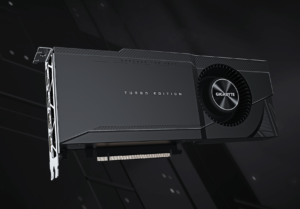
Does using gaming GPUs for high-performance computing (HPC) make sense? It’s a yes and a no. Although gaming GPUs are significantly less expensive, they still have several drawbacks that make them unsuitable for high-performance computing (HPC) environments.
Gamming GPUs come in all shapes and sizes, and it’s easy to see why when you look at their dimensions. They range in height from a few inches to a few feet. On the other hand, Nvidia’s Tesla series of “professional” or “enterprise” GPUs have a very consistent size in terms of their dimensions.
Non-reference GPUs are significantly impacted by the cooling solution designed by the manufacturers because the form factors of the GPU boards are nearly identical (Nvidia and AMD made are approximately 270mm in length).
Gamers don’t care about the final size of their PC’s GPUs, so manufacturers can easily add active cooling fans to their products. However, most high-end GPUs use passive cooling, which reduces their size compared to gaming GPUs, making them more compact.
For one, these “professional” or “enterprise” GPUs aren’t meant to be used on their own, and it is common for them to be combined for high-performance computing. “Density” is an essential consideration for data centers and HPCs, so being able to fit more GPUs in a given area is a significant boost to data center efficiency. Because of the active cooling fans attached to gaming GPUs, enterprises will need more units to meet their performance needs.
A Tesla grade A100 GPU is about eight times more expensive than a Geforce RTX 3070, regardless of whether it is Nvidia’s latest GPU reference or non-reference version. If you need many of them for your data center, it’s OK to sacrifice some performance in exchange for a lower cost. There are active cooling fans on RTX 3070 GPUs, so IT will need to plan for more space between GPUs or a larger server chassis when designing infrastructure to ensure proper cooling, whereas they wouldn’t have to for the A100s. Consequently, enterprises will need a larger server room if they choose to use the 3070s, and the cost of the rack space can easily offset the lower GPU price.
As long as you don’t have a profit motive, gaming GPUs aren’t likely to be used in HPC applications. There is still a need for companies to use the more expensive enterprise GPUs because of the performance and the wide range of operational considerations.
